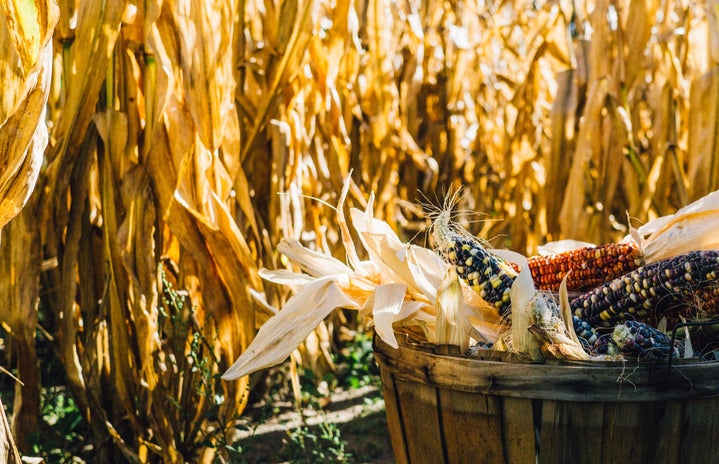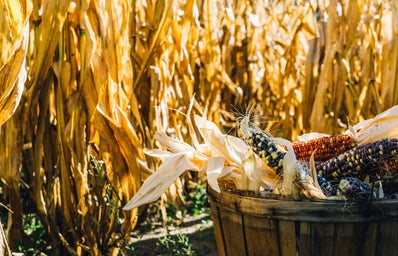The Her Campus National Editors write about products we love and think you’ll love too. Her Campus has affiliate partnerships, so we get a share of the revenue from your purchase. All products are in stock and all prices are accurate as of publication.
If you’re like me, you grew up hearing stories of Native Americans and colonists gathering together to feast, celebrating a plentiful harvest. However, a less pleasant history lies underneath the sanitized version that we were often taught as children.
Going back to the 1600s, it is misleading to paint the picture of the relationship between Native Americans and English settlers as wholesome and peaceful. The leader of the Wampanoag tribe, Massasoit (whose real name was Ousamequin), saw potential in allying with the English against common enemies. Shortly after the first Thanksgiving, relations between the two groups worsened. The English name of Ousamequin’s son, Metacomet, is the namesake for King Philip’s war, where it is estimated that up to 30% of the settler population and 50% of Native Americans in the region died. “It Happened in Rhode Island” recounts Metacomet’s head being displayed by his enemies.
The location where this occurred is now the destination of an annual march that takes place on the National Day of Mourning. Since 1970, Native American groups have reclaimed Thanksgiving Day as the National Day of Mourning, using it as a day to grieve 400 years of tragedy and rally for issues that they continue to face. Frank James started it all when he refused to read a watered-down version of his speech at a Thanksgiving dinner. It is a time of spirituality, mourning, and marching. Modern issues covered by participants include missing and murdered Indigenous women, the climate crisis, pipelines that threaten to devastate Indigenous land, and the Land Back movement. Frank James’ granddaughter, Krisha James, says that “there’s a tendency to acknowledge that what the Pilgrims did was bad but then act like everything’s fine now”.
The haunted history of Thanksgiving deepens in the 1800s. It was officially established as a federal holiday by Abraham Lincoln in 1863 during the Civil War in an attempt to soothe the relationship between a fractured North and South, as well as between the United States and Native Americans. The latter was relevant due to the events of the year prior: Dakota-Sioux men had fought against federal agents who were denying them food. Hundreds of these men were tried without representation, and Abraham Lincoln ordered the hanging of 38 of these men. In response to this history, Dr. Mosteller, Citizen Potawatomi Nation’s Cultural Heritage Center director, says “It was propaganda. . . It was to try and build this event so that you could have a deeper narrative about community building and coming together in shared brotherhood and unity”.
The holiday of gratitude is not a time of thankfulness for many. Mahtowin Munro, co-leader of the United American Indians of New England, says that the Day of Mourning is “explaining why we don’t give thanks for what happened in the 1620s or afterward, up until the present day”. David Silverman, a historian at George Washington University, echoes this sentiment, saying that Thanksgiving allows Americans to “feel good about their colonial past without having to confront the really dark characteristics of it”, highlighting that it is crucial to confront the damaging myths about the holiday. In addition to debunking a false narrative, potawatomi.org suggests including Native American recipes in celebrations.


